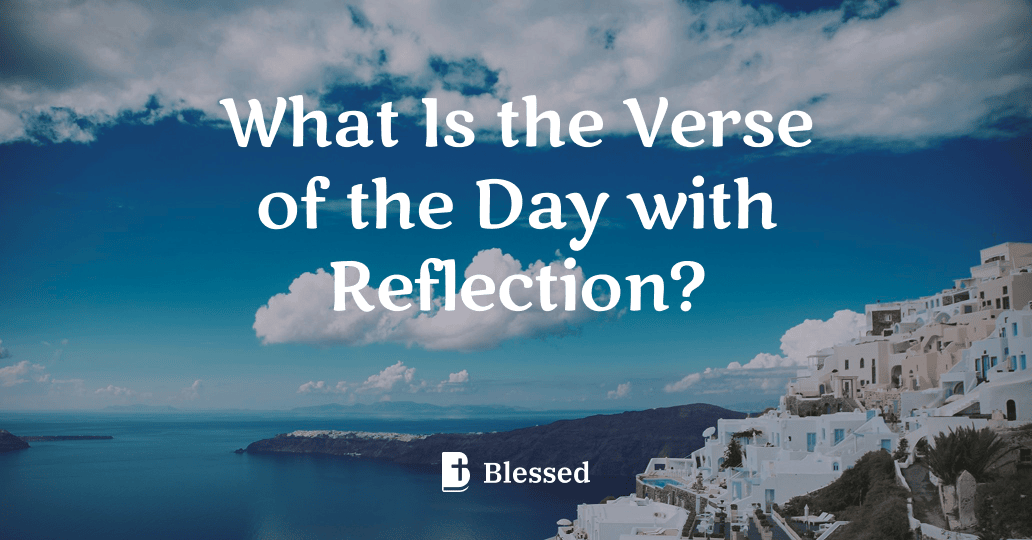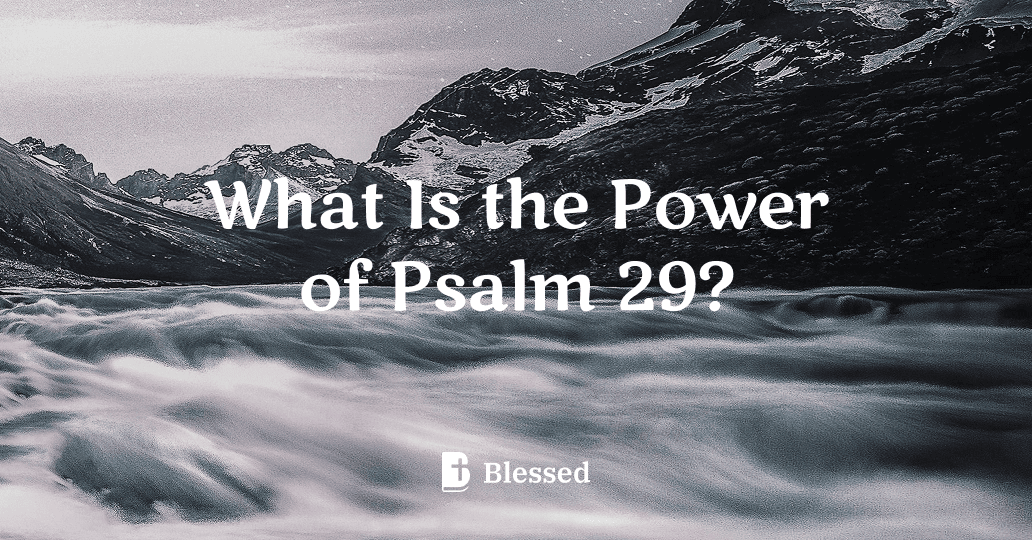What Is the Verse of the Day with Reflection?
- verse
- day
- reflection
- scripture
- daily

What Is the Verse of the Day with Reflection?
The Verse of the Day with Reflection is a daily practice that involves reading a selected Bible verse followed by a thoughtful meditation or explanation. This practice helps believers connect with scripture on a deeper level, encouraging spiritual growth and personal insight.
Purpose of the Verse of the Day
The main purpose is to provide a focused scripture that can inspire, guide, or comfort individuals throughout their day. It serves as a quick yet meaningful way to engage with the Bible regularly.
What Does Reflection Mean?
Reflection refers to the thoughtful consideration of the verse’s meaning and its application in daily life. It encourages readers to:
- Understand the context of the scripture.
- Apply the teachings to personal experiences.
- Grow spiritually by contemplating God’s message.
Benefits of Engaging with the Verse of the Day and Reflection
- Enhances daily spiritual practice.
- Provides encouragement and hope.
- Deepens biblical understanding.
- Helps develop a habit of prayer and meditation.
How to Use the Verse of the Day with Reflection
Start by reading the verse carefully. Then, spend a few minutes reflecting on its meaning, asking questions like: "What is God saying to me today?" or "How can I live out this teaching?" Writing down your thoughts can further enhance this experience.
In summary, the Verse of the Day with Reflection is a simple yet powerful tool that enriches your spiritual journey by combining scripture reading with meaningful contemplation.

What Does John 20:29 Bless?
What Does John 20:29 Bless? Understanding John 20:29 John 20:29 is a significant verse in the New Testament where Jesus addresses Thomas, who doubted His resurrection until he saw Him with his own eyes. The verse reads, "Then Jesus told him, 'Because you have seen me, you have believed; blessed are those who have not seen and yet have believed.'" This passage highlights a special blessing for faith without physical proof. The Blessing Explained The blessing in John 20:29 emphasizes the value of faith without direct evidence. Jesus praises those who believe in Him despite not having witnessed His resurrection firsthand. This encourages believers to trust in spiritual truths and divine promises, even when they cannot see them. Key Aspects of the Blessing Faith over sight: The verse blesses individuals who trust God without needing physical proof. Spiritual assurance: It acknowledges the strength of belief based on testimony, scripture, and personal conviction. Encouragement for believers: It reassures Christians that their faith, though unseen, is honored and rewarded. Why This Blessing Matters Today In modern Christian life, John 20:29 serves as a reminder that faith is a powerful and honored virtue. It encourages believers to maintain trust in God's promises even when facing doubt or uncertainty, reaffirming that faith itself is a source of blessing.
Blessed App
Why Was the Geneva Bible Banned?
Why Was the Geneva Bible Banned?The Geneva Bible, published in 1560, was widely popular among early Protestants but faced opposition in certain periods due to its commentary and associations. Its banning in some contexts reflects political and religious tensions of the time.1. Political CommentaryThe Geneva Bible included marginal notes that provided commentary on the text, often critical of monarchy and aligned with Protestant reformist ideas. These notes were seen as subversive by monarchs like King James I, who viewed them as undermining his authority (Romans 13:1).2. King James’ OppositionWhen King James I commissioned the King James Bible (1611), he aimed to unify religious practices and eliminate rival translations. The Geneva Bible’s popularity among Puritans and its anti-authoritarian commentary prompted him to discourage its use.3. Legacy of the Geneva BibleDespite its banning in certain contexts, the Geneva Bible played a significant role in shaping early Protestant thought. It was the Bible of choice for many English-speaking Christians, including the Pilgrims who settled in America.ConclusionThe Geneva Bible was banned in some periods due to its reformist commentary and political implications. However, its legacy endures as a foundational text of the Protestant Reformation, valued for its accessibility and influence on English-speaking Christianity (Psalm 119:105).
Blessed App
What Is the Power of Psalm 29?
What Is the Power of Psalm 29? Psalm 29 is a profound chapter in the Bible that highlights the majestic power of God through the imagery of a thunderstorm. It reveals God's strength, authority, and the awe-inspiring presence that commands respect and worship. The Majestic Voice of God The psalm describes the voice of the Lord as powerful and mighty, echoing over the waters and shaking the wilderness. This vivid portrayal emphasizes God's control over nature and His ability to impact the physical world with His word. Elements Depicted in Psalm 29 The voice of the Lord over the waters The voice that breaks cedars The voice that flashes flames of fire The voice that shakes the wilderness The voice that causes deer to give birth Each element symbolizes God's overwhelming presence and the transformative power He holds. Spiritual Significance Beyond its natural imagery, Psalm 29 calls believers to recognize God's sovereignty and to offer Him glory and strength. It invites worshippers to submit to His authority and find peace in His mighty power. Conclusion The power of Psalm 29 lies in its vivid depiction of God's voice as both a natural and spiritual force. It serves as a reminder of God's supreme power and inspires reverence, faith, and trust in His eternal strength.
Blessed App
Why God’s Existence Is Not Special Pleading
Why God’s Existence Is Not Special Pleading When discussing the existence of God, one common objection raised is that the argument for God's existence constitutes "special pleading." This accusation implies that the argument for God’s existence is a double standard, where the existence of God is treated differently from the existence of anything else. However, there are several reasons why God’s existence is not special pleading but rather a valid subject of philosophical inquiry and debate. The Nature of the Argument for God’s Existence Special pleading occurs when one applies a standard or rule to everything except for a particular case without justification. However, the argument for the existence of God is based on a different framework than that used for finite beings or physical objects. The existence of God is a metaphysical question, whereas the existence of finite things is a question of empirical evidence. God, by definition, is the necessary and eternal being whose existence does not depend on anything else, while all created things have contingent existence. The Cosmological Argument One of the most well-known arguments for the existence of God is the cosmological argument, which posits that the universe must have had a cause. The argument suggests that everything in the universe has a cause, but this chain of causes cannot go back infinitely. Therefore, there must be a first cause—God. This argument does not fall under special pleading because it applies the same principle of causality that we use to understand the world, but extends it to the origin of the universe. The cause of the universe, being necessary and uncaused, is distinct from the causes of finite things. The Teleological Argument The teleological argument, or the argument from design, suggests that the order and complexity of the universe point to an intelligent designer. This argument is not special pleading because it uses the same reasoning that we apply when identifying design in human creations, such as buildings or machinery. The complexity of the universe, far beyond anything that humans can create, suggests a purposeful and intelligent creator. In this case, the argument for God’s existence follows the same principles of reasoning used to recognize design in the world, but applied to the cosmos as a whole. The Ontological Argument The ontological argument is another philosophical argument for God’s existence, which asserts that the very concept of a perfect God implies His existence. This argument does not involve special pleading because it is based on logical principles that apply universally. If we can conceive of a perfect being, then that being must exist in reality, because existence is a necessary attribute of perfection. While this argument is debated, it is still a legitimate philosophical argument and is not based on special pleading. Conclusion God’s existence is not special pleading because the arguments for His existence are based on valid philosophical principles that apply universally, whether to the cause of the universe, the design of the cosmos, or the nature of perfection. These arguments provide a rational basis for belief in God, grounded in metaphysical reasoning rather than arbitrary exceptions.
Blessed App